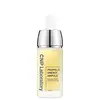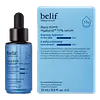What's inside
What's inside
 Key Ingredients
Key Ingredients

 Benefits
Benefits

 Concerns
Concerns

 Ingredients Side-by-side
Ingredients Side-by-side

Water
Skin ConditioningPropolis Extract 10%
Skin ConditioningButylene Glycol
HumectantGlycerin
Humectant1,2-Hexanediol
Skin ConditioningPolysorbate 20
EmulsifyingSophora Flavescens Extract
Skin ConditioningImperata Cylindrica Root Extract
Skin ConditioningPropanediol
SolventHydroxyethylcellulose
Emulsion StabilisingCarbomer
Emulsion StabilisingArginine
MaskingMadecassoside
AntioxidantAllantoin
Skin ConditioningCodonopsis Lanceolata Root Extract
Skin ConditioningMelissa Officinalis Leaf Extract
Skin ConditioningFicus Carica Fruit Extract
HumectantPunica Granatum Extract
AstringentPEG-8
HumectantPentylene Glycol
Skin ConditioningSodium Hyaluronate
HumectantPelargonium Graveolens Flower Oil
MaskingBeta-Glucan
Skin ConditioningSodium Citrate
BufferingHydroxyphenyl Propamidobenzoic Acid
Skin ConditioningEthylhexylglycerin
Skin ConditioningHoney Extract
HumectantSodium Lactate
BufferingPotassium Sorbate
PreservativeCitric Acid
BufferingAscorbyl Palmitate
AntioxidantBiotin
AntiseborrhoeicPalmitoyl Tripeptide-1
Skin ConditioningPalmitoyl Tetrapeptide-7
Skin ConditioningDisodium EDTA
Water, Propolis Extract 10%, Butylene Glycol, Glycerin, 1,2-Hexanediol, Polysorbate 20, Sophora Flavescens Extract, Imperata Cylindrica Root Extract, Propanediol, Hydroxyethylcellulose, Carbomer, Arginine, Madecassoside, Allantoin, Codonopsis Lanceolata Root Extract, Melissa Officinalis Leaf Extract, Ficus Carica Fruit Extract, Punica Granatum Extract, PEG-8, Pentylene Glycol, Sodium Hyaluronate, Pelargonium Graveolens Flower Oil, Beta-Glucan, Sodium Citrate, Hydroxyphenyl Propamidobenzoic Acid, Ethylhexylglycerin, Honey Extract, Sodium Lactate, Potassium Sorbate, Citric Acid, Ascorbyl Palmitate, Biotin, Palmitoyl Tripeptide-1, Palmitoyl Tetrapeptide-7, Disodium EDTA
Water
Skin ConditioningAlcohol Denat.
AntimicrobialGlycerin 4.89%
HumectantAloe Barbadensis Leaf Juice 4.6%
Skin ConditioningPropanediol
SolventPentylene Glycol
Skin Conditioning1,2-Hexanediol
Skin ConditioningButylene Glycol
HumectantHydrolyzed Hyaluronic Acid 0.95%
HumectantSodium Hyaluronate 0.31%
HumectantHydrolyzed Sodium Hyaluronate 0.239%
Skin ConditioningSodium Hyaluronate Crosspolymer 0.001%
HumectantHydroxypropyltrimonium Hyaluronate 0%
Ferulic Acid 0.01%
AntimicrobialAloe Barbadensis Leaf Polysaccharides 0.001%
EmollientNepeta Cataria Extract
TonicAvena Sativa Kernel Extract
AbrasiveRubus Idaeus Leaf Extract
Skin ConditioningCalendula Officinalis Flower
Skin ConditioningBaptisia Tinctoria Root Extract
Skin ConditioningStellaria Media Extract
Skin ConditioningAlchemilla Vulgaris Leaf Extract
AntioxidantEquisetum Arvense Leaf Extract
AstringentUrtica Dioica Leaf Extract
Skin ConditioningHydrogenated Lecithin
EmulsifyingCentella Asiatica Leaf Extract
Skin ConditioningCeramide NP
Skin ConditioningMacadamia Ternifolia Seed Oil
EmollientOlea Europaea Fruit Oil
MaskingVitis Vinifera Seed Oil
EmollientSimmondsia Chinensis Seed Oil
EmollientTremella Fuciformis Polysaccharide
Emulsion StabilisingDocosahexaenoic Acid
Skin ConditioningSucrose Stearate
EmollientTrisodium EDTA
Cholesterol
EmollientEthylhexylglycerin
Skin ConditioningTocopherol
AntioxidantLinoleic Acid
CleansingPalmitic Acid
EmollientSoluble Proteoglycan
Skin ConditioningHelianthus Annuus Seed Oil
EmollientGlycine Soja Protein
EmulsifyingSucrose Palmitate
EmollientPolyglyceryl-10 Stearate
Skin ConditioningPolyglyceryl-10 Oleate
Skin ConditioningAmmonium Polyacryloyldimethyl Taurate
Emulsion StabilisingTromethamine
BufferingCitrus Aurantifolia Oil
CleansingCitrus Aurantium Dulcis Peel Oil
MaskingRosmarinus Officinalis Leaf Oil
MaskingPelargonium Graveolens Flower Oil
MaskingLinalool
PerfumingLimonene
PerfumingCitral
PerfumingCitronellol
PerfumingGeraniol
PerfumingWater, Alcohol Denat., Glycerin 4.89%, Aloe Barbadensis Leaf Juice 4.6%, Propanediol, Pentylene Glycol, 1,2-Hexanediol, Butylene Glycol, Hydrolyzed Hyaluronic Acid 0.95%, Sodium Hyaluronate 0.31%, Hydrolyzed Sodium Hyaluronate 0.239%, Sodium Hyaluronate Crosspolymer 0.001%, Hydroxypropyltrimonium Hyaluronate 0%, Ferulic Acid 0.01%, Aloe Barbadensis Leaf Polysaccharides 0.001%, Nepeta Cataria Extract, Avena Sativa Kernel Extract, Rubus Idaeus Leaf Extract, Calendula Officinalis Flower, Baptisia Tinctoria Root Extract, Stellaria Media Extract, Alchemilla Vulgaris Leaf Extract, Equisetum Arvense Leaf Extract, Urtica Dioica Leaf Extract, Hydrogenated Lecithin, Centella Asiatica Leaf Extract, Ceramide NP, Macadamia Ternifolia Seed Oil, Olea Europaea Fruit Oil, Vitis Vinifera Seed Oil, Simmondsia Chinensis Seed Oil, Tremella Fuciformis Polysaccharide, Docosahexaenoic Acid, Sucrose Stearate, Trisodium EDTA, Cholesterol, Ethylhexylglycerin, Tocopherol, Linoleic Acid, Palmitic Acid, Soluble Proteoglycan, Helianthus Annuus Seed Oil, Glycine Soja Protein, Sucrose Palmitate, Polyglyceryl-10 Stearate, Polyglyceryl-10 Oleate, Ammonium Polyacryloyldimethyl Taurate, Tromethamine, Citrus Aurantifolia Oil, Citrus Aurantium Dulcis Peel Oil, Rosmarinus Officinalis Leaf Oil, Pelargonium Graveolens Flower Oil, Linalool, Limonene, Citral, Citronellol, Geraniol
 Reviews
Reviews

Ingredients Explained
These ingredients are found in both products.
Ingredients higher up in an ingredient list are typically present in a larger amount.
1,2-Hexanediol is a synthetic liquid and another multi-functional powerhouse.
It is a:
- Humectant, drawing moisture into the skin
- Emollient, helping to soften skin
- Solvent, dispersing and stabilizing formulas
- Preservative booster, enhancing the antimicrobial activity of other preservatives
Butylene Glycol (or BG) is used within cosmetic products for a few different reasons:
Overall, Butylene Glycol is a safe and well-rounded ingredient that works well with other ingredients.
Though this ingredient works well with most skin types, some people with sensitive skin may experience a reaction such as allergic rashes, closed comedones, or itchiness.
Learn more about Butylene GlycolEthylhexylglycerin (we can't pronounce this either) is commonly used as a preservative and skin softener. It is derived from glyceryl.
You might see Ethylhexylglycerin often paired with other preservatives such as phenoxyethanol. Ethylhexylglycerin has been found to increase the effectiveness of these other preservatives.
Glycerin is already naturally found in your skin. It helps moisturize and protect your skin.
A study from 2016 found glycerin to be more effective as a humectant than AHAs and hyaluronic acid.
As a humectant, it helps the skin stay hydrated by pulling moisture to your skin. The low molecular weight of glycerin allows it to pull moisture into the deeper layers of your skin.
Hydrated skin improves your skin barrier; Your skin barrier helps protect against irritants and bacteria.
Glycerin has also been found to have antimicrobial and antiviral properties. Due to these properties, glycerin is often used in wound and burn treatments.
In cosmetics, glycerin is usually derived from plants such as soybean or palm. However, it can also be sourced from animals, such as tallow or animal fat.
This ingredient is organic, colorless, odorless, and non-toxic.
Glycerin is the name for this ingredient in American English. British English uses Glycerol/Glycerine.
Learn more about GlycerinPelargonium Graveolens Flower Oil is the pressed oil of the Rose Geranium plant. It is volatile, meaning it evaporates off the skin.
Fragrant components of Rose Geranium include citronellol and geraniol. These may cause allergies and skin-sensitivity. We recommend speaking with a professional if you have any concerns.
The scent of Rose Geranium closely resembles traditional roses.
Learn more about Pelargonium Graveolens Flower OilPentylene glycol is typically used within a product to thicken it. It also adds a smooth, soft, and moisturizing feel to the product. It is naturally found in plants such as sugar beets.
The hydrophilic trait of Pentylene Glycol makes it a humectant. As a humectant, Pentylene Glycol helps draw moisture from the air to your skin. This can help keep your skin hydrated.
This property also makes Pentylene Glycol a great texture enhancer. It can also help thicken or stabilize a product.
Pentylene Glycol also acts as a mild preservative and helps to keep a product microbe-free.
Some people may experience mild eye and skin irritation from Pentylene Glycol. We always recommend speaking with a professional about using this ingredient in your routine.
Pentylene Glycol has a low molecular weight and is part of the 1,2-glycol family.
Learn more about Pentylene GlycolPropanediol is an all-star ingredient. It softens, hydrates, and smooths the skin.
It’s often used to:
Propanediol is not likely to cause sensitivity and considered safe to use. It is derived from corn or petroleum with a clear color and no scent.
Learn more about PropanediolSodium Hyaluronate is hyaluronic acid's salt form. It is commonly derived from the sodium salt of hyaluronic acid.
Like hyaluronic acid, it is great at holding water and acts as a humectant. This makes it a great skin hydrating ingredient.
Sodium Hyaluronate is naturally occurring in our bodies and is mostly found in eye fluid and joints.
These are some other common types of Hyaluronic Acid:
Learn more about Sodium HyaluronateWater. It's the most common cosmetic ingredient of all. You'll usually see it at the top of ingredient lists, meaning that it makes up the largest part of the product.
So why is it so popular? Water most often acts as a solvent - this means that it helps dissolve other ingredients into the formulation.
You'll also recognize water as that liquid we all need to stay alive. If you see this, drink a glass of water. Stay hydrated!
Learn more about Water